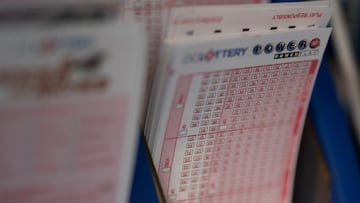Why did Powerball jackpots use to have a limit? When and why did that change?
Winners of the recent near $2 billion jackpot would have been disappointed in the 1990s as they could only receive 10% of that amount. Why?


The Powerball lottery, in its initial form of Lotto America, used to have a jackpot limit of $80 million, the equivalent of $216 million today.
So imagine winning that crazy $1.77 billion like the last jackpot and being able to receive a tiny portion of it.
A single-ticket holder from California was the sole winner of an estimated $1.77 billion Powerball in the second-largest lottery jackpot in history, the lottery game's website said. The identity of the ticket holder was not disclosed https://t.co/7FanJyiLHv pic.twitter.com/22WdDywsic
— Reuters (@Reuters) October 12, 2023
That era was domianted by individual state lotteries; by 1992, Lotto America was still only in 15 states.
Limiting the jackpot ensured that lottery operators could manage the financial obligations associated with the prize payouts.
“There were concerns about what you could do with that money, like buy a small country or something,” Ed Stanek, director of Lotto America, said at the time.
This jackpot limit changed several times over the years, increasing to $100 million in the late 1990s. The smaller winning prizes were introduced, such as the $1 million winnings to ensure that people did not feel burned-out by the tiny chance of winning the big jackpot.
When and why did that change?
In 2010, the game underwent a major redesign which included raising the jackpot limit and changing the odds of winning. The changes were intended to create larger jackpots and generate more interest and ticket sales.
Related stories
The jackpot limit was eliminated. This change allowed Powerball jackpots to grow to unprecedented amounts, leading to some of the largest lottery jackpots in history.
The removal of the jackpot limit and the increase in the minimum jackpot amount were implemented to compete with instant-win scratch cards and to attract more players, resulting in more significant prizes and, subsequently, more revenue for state programs. .

